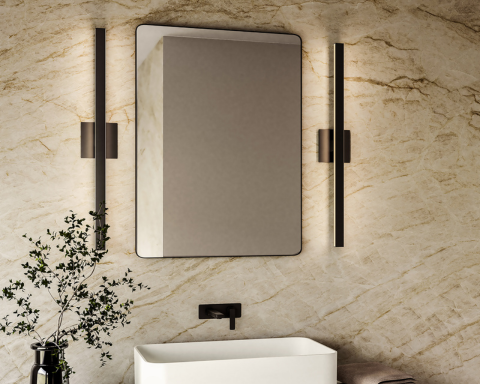Free Ground Shipping on Orders Over $49 Details & Exclusions Excludes Curb Side Delivery (LTL). Lower 48 United States Only.
Nov 1, 2014
Steps in Installing Security Lights for Your Home

Installing outdoor security lighting is an inexpensive way to keep your home safe at night, deterring any intruder from entering. Specifically, motion activated security light fixtures have motion detectors which are small electronic “eyes” that sense infrared waves. Infrared waves are heat waves that emit from moving objects, such as people, animals, and cars.
When the detector senses an object across its field of view move, it triggers the lights to turn on. The lights would stay on from 1 to 20 minutes, depending on how you preset the timer. After the preset time, the detector automatically shuts the lights off unless there are further movements within its range.
Motion activated lighting has a photocell which deactivates the lights during the day. Motion detectors typically have a semicircular field of view of up to 240 degrees and an adjustable distance range that extends to 70 feet or more.
Motion activated lighting is quite easy to install. Here are the steps:
Step #1: Remove the Old Light Fixture
Before you start, make sure you turn off the power to the light circuit at the main electrical box. With a drill or driver, remove the mounting screws that hold the old fixture in place then remove the old fixture. Loosen the wire nuts at the ends of the exposed wires. Use a circuit tester to check that the power is indeed off. Detach the wires from the old fixture.
Wires extending from the junction box in the wall may be pigtailed or connected to other wires. If so, leave these wires attached. Exterior lights are usually wired together in a series so that all of these can be turned on with just one switch. The wires of the new light fixture will be attached to these interior wires in the same way as the old light fixture.
Step #2: Reconnect the Wires
If needed, install the neoprene gasket behind the new light fixture to prevent water from seeping into its back. However, most exterior light fixtures are waterproof, so a gasket may not needed. Check your lighting fixture’s specifications to be sure that the model you have purchased is indeed suitable for wet locations.
Strip about three-fourth inch of insulation from the ends of the new light fixture’s wires. Twist them onto the wires that extend from the wall junction box, black to black, white to white. Use wire nuts to secure each splice.
Step #3: Install the New Light Fixture
Place the light fixture over the junction box. There are fixtures that are mounted directly to the junction box, and there are those that are fastened to the wall. Use a drill or driver to secure the screws. Make sure that you do not over-tighten the screws. Tuck all wires into the box.
Step #4: Program the Light Fixture
Open the cover panel on the base of the light fixture and adjust the light settings. Most motion activated light fixtures have high, medium, and low sensitivity settings. For maximum security, select high sensitivity. The time settings determine the length of time that the light will stay on when it is activated. Choose the number of seconds or minutes you want to keep the light on.
Step #5: Test the Motion Sensor
Screw the bulbs in place then restore the power to the fixture at the breaker panel. Test the motion sensor by placing a piece of tape over the light sensor as most motion-activated security lights will only work when it is dark. Walk back and forth in front of the fixture outside its operating range, gradually moving closer until it senses you and triggers the light to turn on. Time the duration that the light is on. It should remain on for the time you have set. If necessary, adjust the light’s range sensitivity.




